Potty training for your child can be one of the most challenging and scary phases of early parenthood. However, the end result can be ultimately highly rewarding for your child and you.
Imagine for a moment, a world where your diaper bag isn’t threatening to burst at the seams, where your little one takes pride in their newfound independence, and the era of late-night diaper changes is finally a thing of the past. Sounds too good to be true, doesn’t it? But with the right tools, strategies, and a hearty dose of patience, you can transform this daunting task into an empowering journey of growth for both you and your child.
You see, toilet training doesn’t have to be the nerve-wracking experience we’ve all heard about or perhaps even faced ourselves. In fact, with a stress-free approach, this transition can turn into a memorable milestone that bonds you and your child even more closely.
So whether you’re a new parent feeling lost in the whirlwind of advice, or a seasoned pro seeking a smoother approach this time around, you’re in the right place. Prepare to be armed with practical tips, evidence-based advice, and real-life solutions that will guide you towards potty training success.
Your child’s journey to independence starts here – buckle up and enjoy the ride!
Table of Contents
The Challenges of Potty Training
Potty training can be quite the journey, filled with both triumphs and frustrations for both parents and little ones. In this section, we’ll delve into the common challenges that arise during toilet training and share some valuable tips to overcome them.
One of the major challenges of potty training is resistance or hesitation from our little ones. The concept of using the potty may be unfamiliar or even intimidating to them. It’s completely normal for them to show some reluctance.
Additionally, accidents are bound to happen as they learn to master this new skill. It’s essential to stay patient and understanding throughout the process, offering reassurance and support.
Another hurdle that may catch us by surprise is regression. Just when we think our child has mastered potty training, they may revert back to using diapers. This can be frustrating, but remember, it’s a common occurrence.
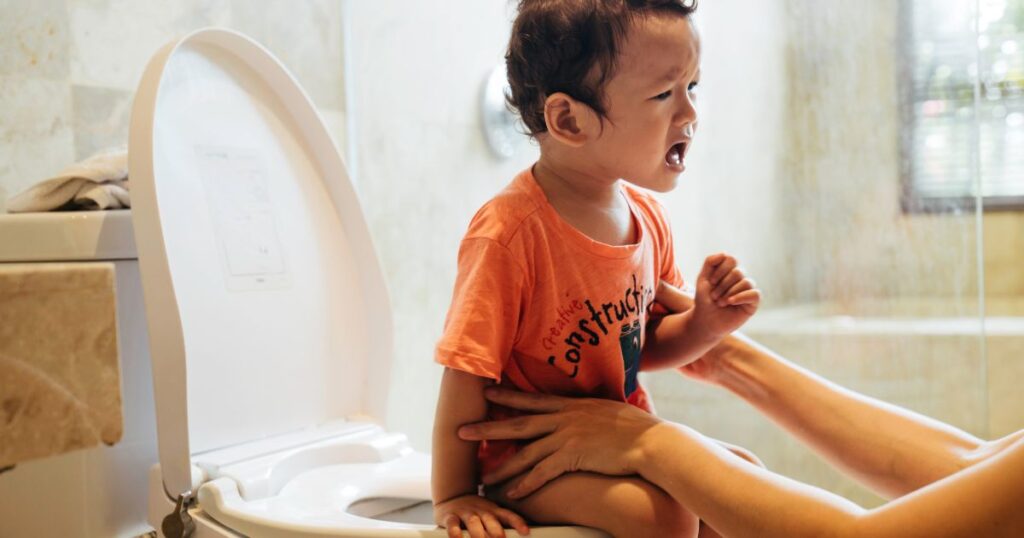
In the upcoming sections, we’ll explore various potty training methods and strategies to help you overcome these hurdles. From gentle approaches to more focused methods, we’ll help you find the right path that suits your child’s unique personality and needs.
Popular Potty Training Methods
When it comes to helping your child make the transition from diapers to using the potty, there are various popular methods to choose from. In this section, we’ll explore some of these methods, each with its own unique approach and philosophy.
Whether you prefer a gentle and child-led approach, a structured and parent-led method, or a quick and focused technique, you have various options in hand. By understanding the different toilet training methods available, you can find the one that resonates best with your child’s needs and your family’s dynamics.
Here are some of the popular potty training methods.
1. The Brazelton or Child-Oriented (CO) Approach
Let’s talk about the Brazelton or Child-Oriented (CO) Approach to Potty Training, which is a gentle and flexible method that focuses on your child’s readiness and comfort. This approach recognizes that every child is unique and may progress at their own pace, creating a personalized and supportive experience for toilet training.
Instead of rushing the process, the CO approach encourages parents to observe their child for signs of readiness. Look out for cues like showing interest in the toilet or expressing discomfort with diapers. Once you notice these signs, it’s time to gradually introduce the potty chair or toilet to your child.
Here’s the key: let your child take the lead! Give them the opportunity to use the potty chair or toilet on their own terms. This helps them develop a sense of ownership and control over the process. It’s all about empowering your child to take charge of their potty training journey.
With the CO approach, toilet training becomes a positive and empowering experience for both your child and you as the caregiver. Remember, every child is unique, so be patient and supportive throughout their potty training journey.
2. Parent-Led Potty Training
The Parent-Led Potty Training, is a method that allows you, as the caregiver, to take the lead in assisting your child during the toilet training process. With this approach, you play an active role in creating a supportive and nurturing environment for your little one.
Parent-Led Potty Training emphasizes consistency and establishing a structured routine for potty breaks. By setting regular times for your child to sit on the potty, you create a sense of predictability and familiarity. This helps them understand that using the potty is a regular part of their daily routine.
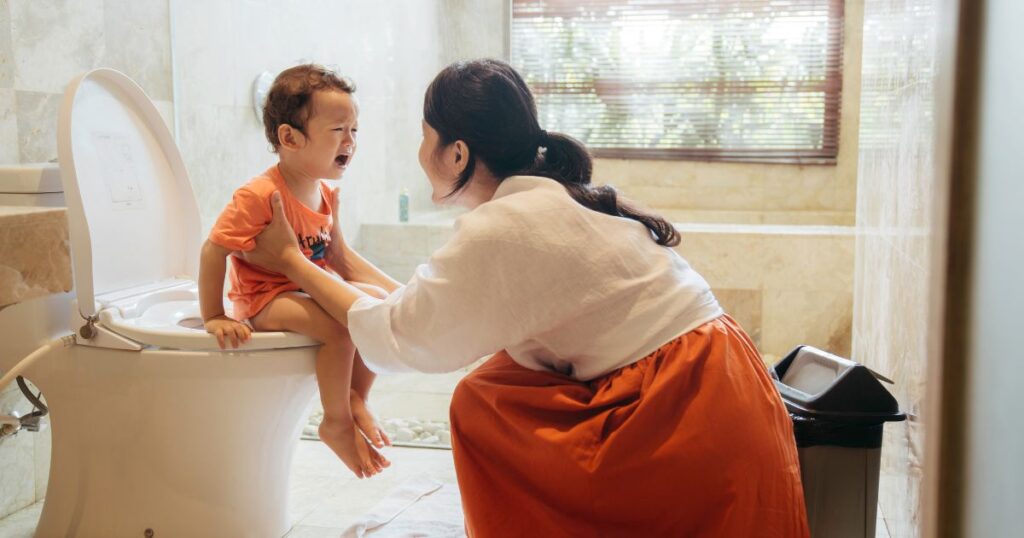
As a parent, you can provide guidance and support throughout the process. Encourage your child to use the potty, offer reminders when it’s time to go, and assist them in sitting on the potty chair or potty training seat. By being actively involved, you demonstrate that potty training is an important and valued milestone.
It’s essential to remember that every child progresses at their own pace. Some children may grasp potty training quickly, while others may take more time.
Patience is key in this process. Offer praise and encouragement to your child, even for small steps forward. By celebrating their successes, you empower them and boost their confidence.
With Parent-Led Potty Training, you can create a supportive and nurturing environment that encourages your child to become a potty-training superstar. Your active involvement, consistency, and positive reinforcement will help your little one embrace toilet training with confidence.
3. The 3-Day Potty Training
The 3-Day Potty Training Method, a popular approach, aims to successfully potty train your toddler in just three days. By dedicating consecutive days solely to toilet training, you can create a focused environment.
Encourage your little one to consistently use the potty, providing rewards or incentives for each successful attempt. Remember to foster a positive and supportive atmosphere, offering ample praise and encouragement throughout the process.
While this method can be effective for some children, it’s crucial to remain patient and flexible, as every child’s journey with potty training is unique.
4. Oh Crap! Potty Training
Let’s talk about the highly regarded Oh Crap! Potty Training Method, created by Jamie Glowacki. This method has gained popularity and success among parents. It focuses on teaching young children to recognize their body’s signals and take control of their own bathroom needs.
The Oh Crap! Potty Training Method follows a no-nonsense, direct approach that doesn’t rely on rewards or punishment. Instead, it emphasizes empowering children to understand their body’s cues for needing to use the bathroom.
Jamie Glowacki provides a step-by-step guide for caregivers, covering important aspects such as when to start the potty training journey, how to handle accidents, and the transition to underwear. This comprehensive guidance ensures that parents have a clear roadmap to follow.
One of the reasons many parents embrace the Oh Crap! Potty Training Method is because of its simplicity and nurturing nature. By focusing on teaching children to recognize their own bodily signals, this method encourages independence and self-awareness.
With the Oh Crap! Potty Training Method, you can provide your child with the tools and knowledge they need to take control of their potty training journey. The method’s straightforward approach and emphasis on understanding their own body’s cues make it an appealing choice for many parents.
5. Naked Potty Training
This method is also known as “bare-bottom” or “no-pants” potty training. This method involves allowing your child to go without diapers or underwear and encouraging them to use the potty.
The idea behind Naked Potty Training is that by removing the barrier of diapers, children become more aware of their bodily functions and are motivated to use the potty. Without the safety net of a diaper, they are more likely to recognize the signals that indicate they need to go to the bathroom.
It’s important to note that Naked Potty Training can be messy initially. Accidents are to be expected as your child learns to navigate this new experience. However, many parents have found that this approach can accelerate their child’s ability to recognize the signs of needing to use the bathroom.
During Naked Potty Training, it’s crucial to have patience and provide support for your child. Accidents will happen, and it’s important not to get discouraged or frustrated. Instead, offer reassurance, help them clean up, and encourage them to keep trying.
Remember, every child is different, and what works for one may not work for another. If you decide to try Naked Potty Training, ensure that it aligns with your child’s readiness and your family’s preferences.
With patience, support, and a positive attitude, Naked Potty Training can be a stepping stone towards your child’s toilet training success.
6. Potty Training with Underwear
The Potty Training with Underwear method promotes independence and helps children understand their body’s signals for when they need to use the bathroom.
When you introduce your child to underpants or big-kid underwear, you’re encouraging them to recognize the signs of readiness and take charge of their bladder and bowel movements. It’s all about empowering them to become more aware of their body’s needs.
With Potty Training with Underwear, consistency and positive reinforcement are key. Instead of relying on diapers or pull-ups, you’re encouraging your child to transition to regular underwear. By doing so, they understand that wearing diapers is no longer the norm and that they are responsible for using the potty.
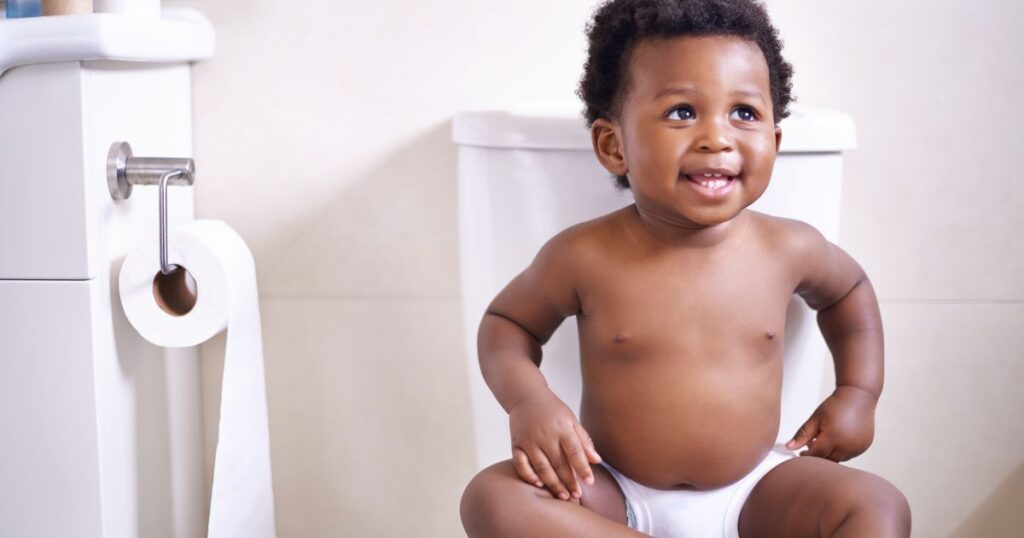
Potty Training with Underwear is a gentle and nurturing approach that allows your toddler to gain confidence and become a big kid in control of their own bodily functions.
Remember, every child is different, so be patient and supportive throughout their potty training journey.
7. Combined approach
Many parents find that combining different approaches work well for toilet training their children. The Combined approach is all about finding the right mix of techniques to make the potty training journey a success.
The combined approach allows you to incorporate both structured and child-led methods, creating a personalized experience for your little one. You can use a potty training schedule or chart to provide a framework for consistency and routine. This gives your child a clear understanding of when it’s time to use the potty.
At the same time, it’s important to let your child take the lead. By allowing them to make choices and decisions during their potty training journey, you encourage their independence and self-awareness. This empowers them to take ownership of their own progress.
Remember, every child is unique, and what works for one may not work for another. With the combined approach, you have the flexibility to tailor your methods to meet your child’s specific needs. You can observe their cues and adjust your approach accordingly.
By combining structured and child-led techniques, potty training becomes a personalized and stress-free experience for both you and your child. So, be open to trying different methods, be patient, and enjoy this special milestone with your little one!
When to Start Potty Training?
Starting the potty training journey with your toddler is an important milestone. Understanding when to begin this process is crucial for success.
Look for signs that your little one is ready, such as showing interest in the bathroom and being able to communicate their needs. Although most children are ready between 18 months and 3 years old, it’s important to remember that every child develops at their own pace.
Before embarking on potty training, make sure to introduce your child to the concept of using the toilet and allow them to practice sitting on a potty chair or toilet seat insert. Choose an approach that suits your child and be consistent with your routine.
It’s important to keep in mind that accidents are a normal part of the learning process, so be patient and supportive throughout this journey.
Potty training accessories
Potty training accessories play a significant role in supporting your child’s toilet training journey.
One essential accessory is a comfortable and child-friendly potty chair or potty seat, which provides a dedicated space for your toddler to learn and become familiar with using the toilet.
Another useful tool is a step stool, which empowers your little one to reach the toilet or sink independently, fostering a sense of accomplishment.
Consider transitioning from diapers to training pants, which bridge the gap between diapers and regular underwear. Training pants allow your child to experience accidents while still offering some protection.
Maintaining hygiene is essential, and flushable wipes and hand sanitizer can come in handy during this process. If your child struggles with nighttime accidents, a bedwetting alarm can help them wake up when they need to use the bathroom.
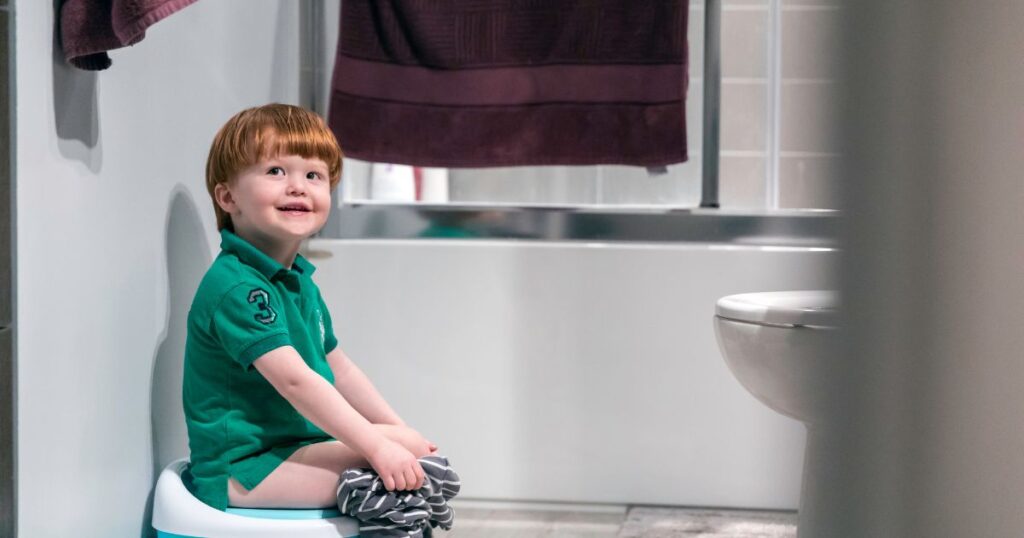
Troubleshooting Potty Training: Solutions for Common Challenges
Potty training can come with its fair share of challenges, but fear not, parents! We’re here to help you navigate through some common problems and offer practical solutions. From resistance to accidents and setbacks, we’ve got you covered.
Here are our top solutions to help you tackle these hurdles and make potty training a smoother experience for both you and your child.
Resistance to Using the Potty
Problem: Your child shows resistance or reluctance to use the potty, making the process frustrating and challenging.
Solution: Make potty time fun and engaging by introducing games, books, or special toys. Provide encouragement and praise for any progress made. Let your child take the lead and be patient as they become more comfortable with the idea of using the potty.
Accidents and Regression
Problem: Accidents happen, and sometimes a child who was making progress starts having accidents or regresses back to using diapers.
Solution: Stay calm and avoid getting upset or scolding your child. Offer support and reassurance during accidents, emphasizing that it’s a learning process. Revisit the basics, such as regular potty breaks, and reinforce positive habits. Remember, setbacks are normal, and consistency is key.
Fear of the Toilet or Bathroom
Problem: Your child develops a fear or anxiety about using the toilet or being in the bathroom.
Solution: Gradually introduce your child to the toilet or bathroom environment. Start by letting them sit fully clothed on the potty or toilet seat to build familiarity. Use positive reinforcement, like rewards or praise, to create positive associations. Patience, support, and reassurance are essential in helping your child overcome their fears.
Bowel Movement Challenges
Problem: Your child struggles with bowel movements during potty training, leading to constipation or withholding.
Solution: Ensure your child’s diet includes plenty of fiber-rich foods and adequate hydration to prevent constipation. Encourage them to sit on the potty at regular intervals, especially after meals, to establish a routine. Provide a relaxed environment and offer support and praise when they successfully use the potty for bowel movements.
Nighttime Bedwetting
Problem: Your child continues to have nighttime accidents even after being potty trained during the day.
Solution: Limit fluids before bedtime and encourage your child to use the potty right before going to sleep. Consider using waterproof mattress covers or protective bedding to ease clean-up. Be patient, as nighttime bladder control takes longer to develop for some children.
Fear of Public Restrooms
Problem: Your child is hesitant or refuses to use public restrooms, making outings challenging.
Solution: Familiarize your child with public restrooms by visiting them together and explaining how they work. Provide reassurance and accompany them until they feel more comfortable. Consider using portable potty seats or disposable seat covers to provide a sense of familiarity and cleanliness.
Potty training may present its share of challenges, but with these practical solutions, you’re well-equipped to tackle common problems along the way. Remember to stay patient, provide support, and celebrate every milestone achieved.
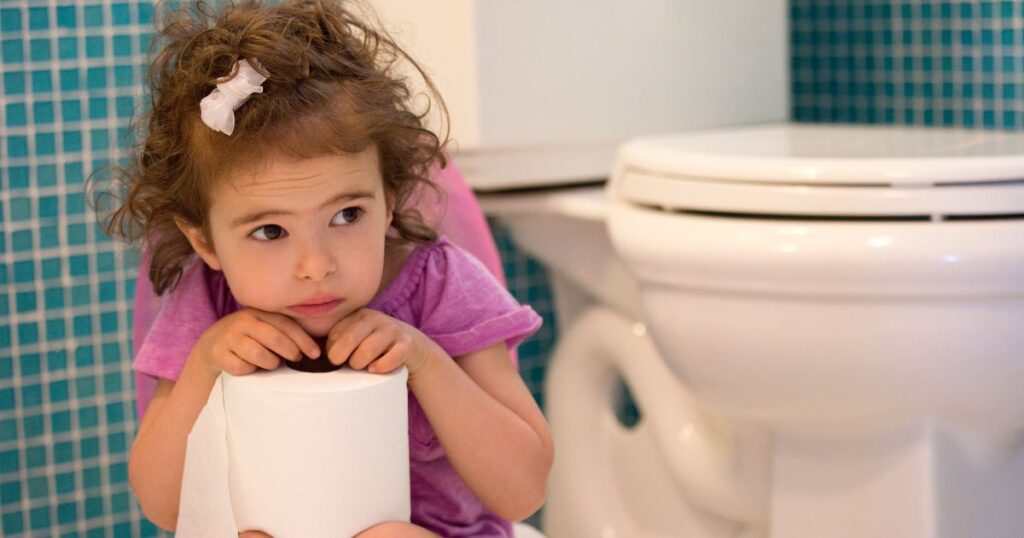
Top 10 Potty Training Tips for Parents
Embarking on the potty training journey with your little one can feel like a big milestone. While it may have its challenges, with the right approach and a little guidance, you can make the process smoother and more successful.
To help you along the way, we’ve compiled a list of the top 10 potty training tips for parents. From preparing your child for it to dealing with accidents, these tips will set you up for toilet training success. Let’s dive in!
- Timing is Key
Start potty training when your child shows signs of readiness, such as staying dry for longer periods or expressing interest in the bathroom. Avoid rushing the process, as each child develops at their own pace.
- Create a Potty-Friendly Environment
Set up a child-friendly potty area with a comfortable seat and easy access to the bathroom. Make it fun by adding books or toys to keep your child engaged during potty time.
- Introduce Potty Training Books and Videos
Read potty training books or watch videos together to introduce the concept and get your child excited about using the potty. This can help them understand what to expect and build their confidence.
- Let Your Child Take the Lead
Encourage your child to be an active participant in their potty training journey. Allow them to choose their potty seat or underwear, and let them have a say in the process. This empowers them and fosters a positive association with using the potty.
- Use Positive Reinforcement
Praise and reward your child for their efforts and successes, whether it’s sitting on the potty or successfully using it. Sticker charts, small treats, or verbal encouragement can go a long way in motivating your child.
- Establish a Routine
Create a consistent potty schedule, especially during the early stages of potty training. Regularly take your child to the potty at designated times, such as after meals or before bedtime. This routine helps them understand and anticipate bathroom breaks.
- Be Patient and Understanding
Accidents are a normal part of the learning process. Stay calm, offer reassurance, and avoid scolding or punishing your child. Keep in mind that accidents happen, and patience is key to a positive potty training experience.
- Dress for Success
Choose clothing that is easy for your child to manage independently when using the potty. Elastic-waist pants or dresses can make it easier for them to undress quickly when needed.
- Communicate Openly
Encourage open communication with your child about their bodily functions. Teach them the appropriate words for urine and bowel movements and encourage them to let you know when they need to use the potty.
- Celebrate Milestones
Celebrate every milestone and progress your child makes in their potty training journey. Whether it’s the first time they sit on the potty or using it independently, acknowledge and celebrate their achievements to keep their motivation high.
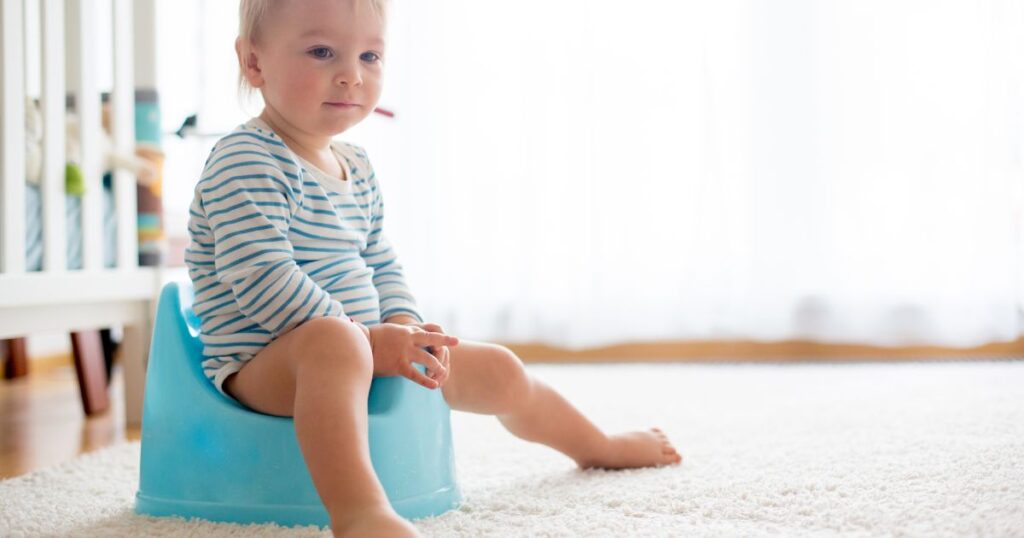
Frequently Asked Questions
What is the appropriate age to potty train?
The appropriate age to start potty training differs for every child, but most children begin between 2 and 3 years old. Look for signs of readiness like bathroom interest, longer dry periods, and the ability to follow instructions. Stay patient and flexible, praising and rewarding your child’s progress.
How Long Does Toilet Training Take?
Toilet training duration varies for each child, typically lasting weeks to months. Some children may progress faster if they show signs of readiness earlier. Patience, consistency, and positive reinforcement are crucial during the toilet training process.
What happens if potty training isn’t working?
If potty training isn’t going well, it’s crucial to remain calm and patient. If your child shows resistance or disinterest, take a break and try again later. Evaluate if your child is physically ready for the training and adapt your strategy accordingly. Seek guidance from pediatricians or child development experts if you encounter ongoing difficulties.
What potty training methods should be avoided?
When potty training, it’s best to avoid using punishment or negative reinforcement. Don’t rush or pressure your child to use the potty before they’re ready, and try not to switch between different methods too frequently. Avoid comparing your child’s progress to others or putting undue pressure on them to meet specific milestones.
What if toilet learning doesn’t work?
If toilet training doesn’t go smoothly, don’t panic. Each child is unique and learns at their own pace. Take a break and try again later. Adjust your approach or explore different techniques. Seek advice from professionals if needed for guidance and support.
Summing Up….
In conclusion, potty training can be a challenging and sometimes frustrating process, but with the right approach and a little patience, it can be stress-free for both you and your child.
Always remember to choose a method that aligns with your child’s personality and developmental stage and to be consistent in your approach. Create a positive and supportive environment by allowing your child to potty train at their own pace, establishing a routine, and making the process fun.
Accidents and setbacks are normal, so remain calm and offer encouragement. And don’t forget to celebrate every small success along the way! If you have any questions or need further guidance, please feel free to comment below. We’re here to help you through this important milestone in your child’s life.
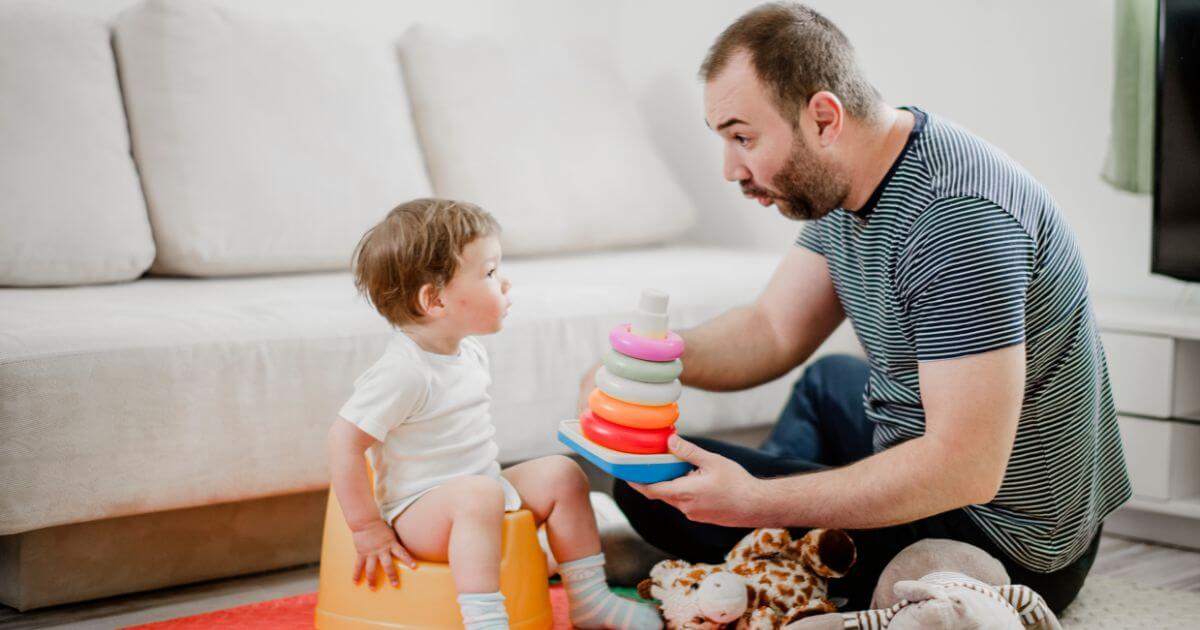
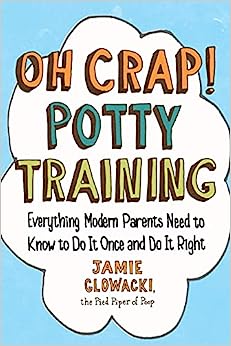


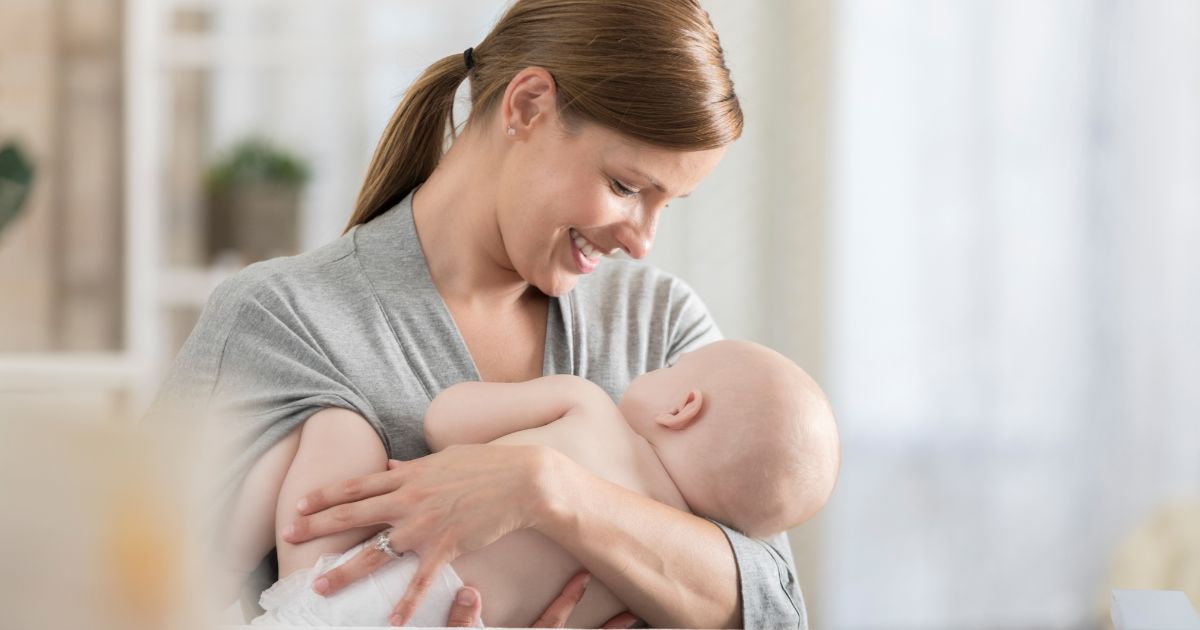
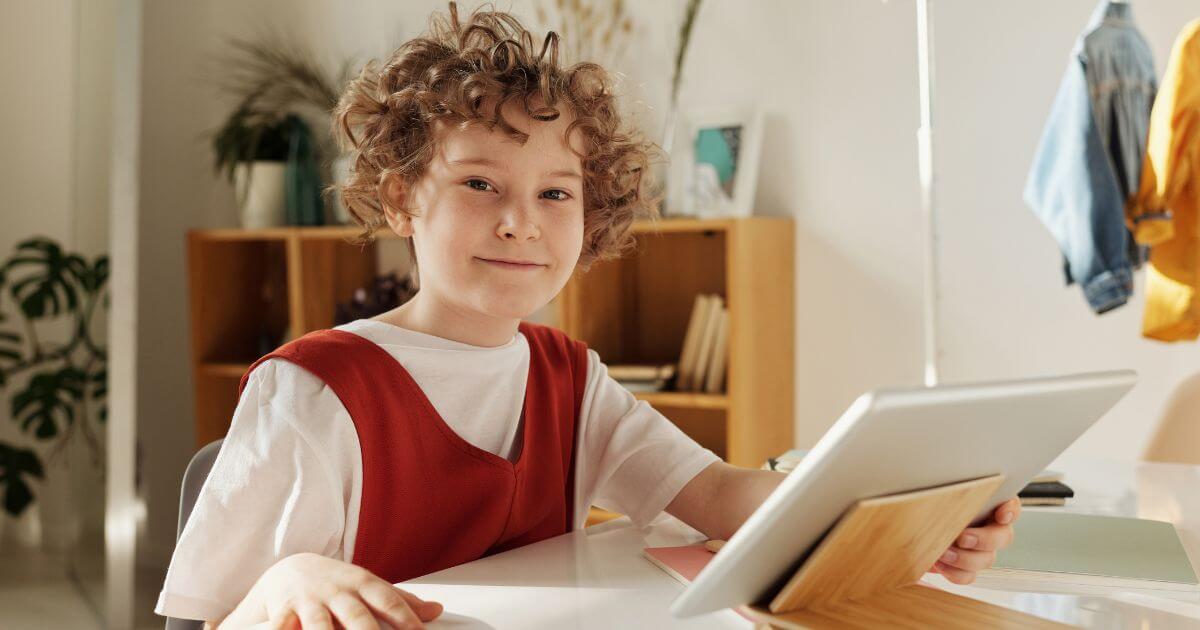

Leave a Reply